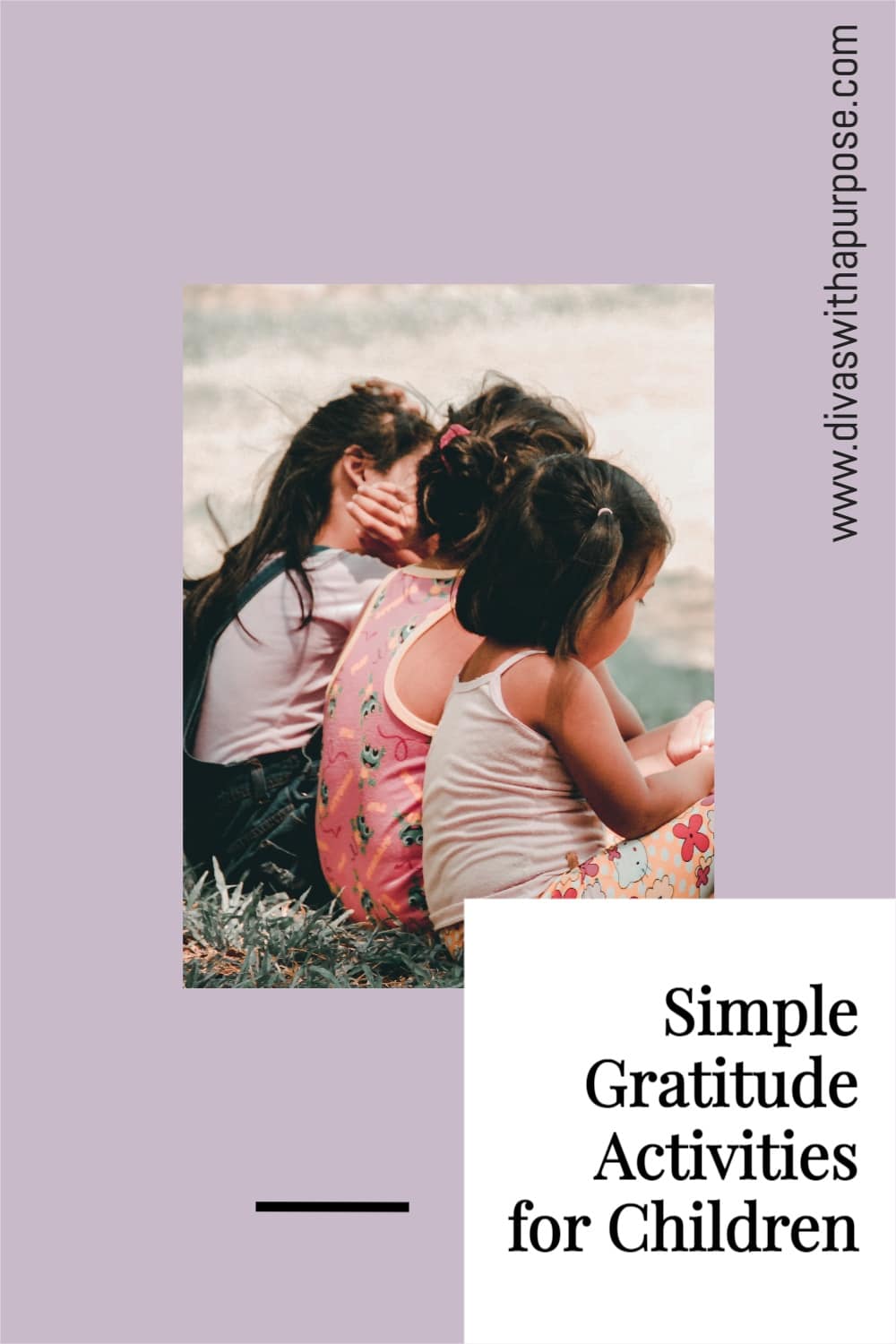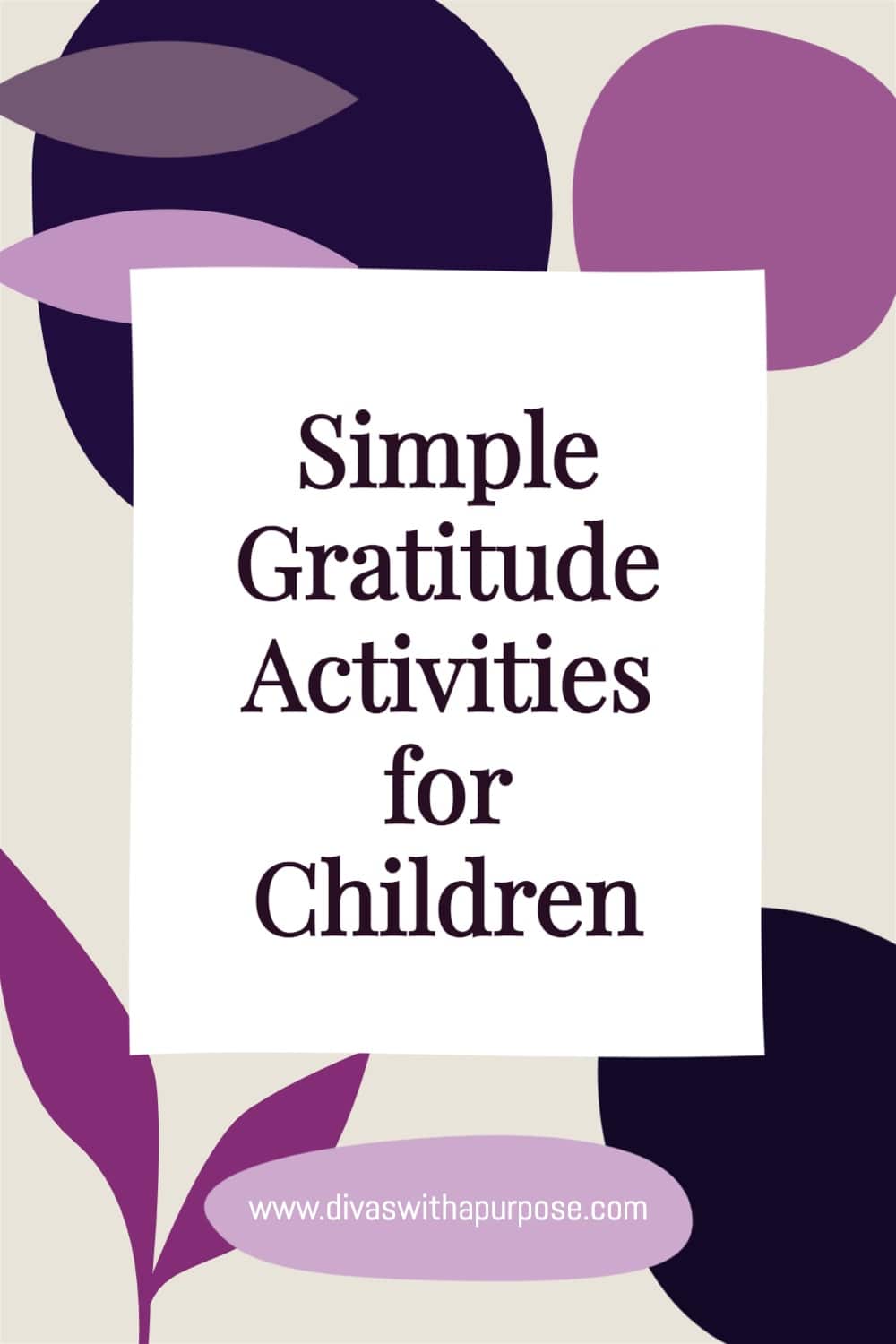Simple Gratitude Activities for Children
Gratitude activities are a way to stay in touch with what we have and be grateful for it, as opposed to focusing on what we don’t have.
Gratitude exercises can be as simple as noticing three things you’re grateful for everyday or as complex as a full day dedicated to gratitude. Whatever the activit, it’s an important piece of self-care because it forces us to focus on the positive aspects of our lives and not just the negative ones.
Also, gratitude is a key value that parents need to teach to their children from a very young age. How, you ask? It really doesn’t have to be difficult. There are some easy ways to introduce this important value such as practicing mindfulness, exchanging thank-you letters with friends and family, or having a gratitude journal. Each of these gratitude activities reinforces the importance of being thankful in their daily lives.

Importance of Gratitude Activities for Different Ages
Children benefit from practicing gratitude by increasing their empathy and compassion. It also helps them to feel more secure and content with themselves.
Teens can benefit from gratitude exercises by increasing their self-awareness. They will learn to recognize what is happening in the present moment and take time to appreciate what they have.
Adults can be grateful for the things that they do every day that make them happy or satisfied, such as taking care of their children or pets, cooking a meal, or even doing their daily chores. They should take a minute everyday to think about these things and be grateful for them because it could help them find a new perspective on life.
Benefits of Engaging in Gratitude Activities with Kids
If you are searching for a way to teach your kids about gratitude or to be more grateful in your life, try some of these gratitude exercises. Remember not to overthink gratitude. Simple action tasks can include giving a hug to someone who needs one or finding beauty in the world around you.

Gratitude Journal
A gratitude journal is a great way to teach your child about being thankful. Get them a journal or have them make their own. Then try to make it a habit to write in their journals daily.
Make a Gratitude Chain or Tree
Gratitude chains and trees are a fun and easy way for children to share their feelings of gratitude.
You can create a chain for every day in November with something they are grateful for to hang around their room. Or, create a tree and add a leaf every day with something they are thankful for. With these, you can go as long as you want!
Rainbow Kind of Days
Something to remember is that bad days happen but it doesn’t mean the entire day needs to be miserable. Let your child know that there is always light at the end of a tunnel.
Have a “rainbow kind of day.” Use this phrase to tell your child that you had a bad day, but you’re going to make it through. Talk about your day and the struggles you went through. Then, tell your child about your rainbow.
Similar to what happens in a storm, there’s a lot of bad stuff going on at the time that makes you uncomfortable and miserable. But as the storm dissipates, you’re left with a beautiful rainbow.
Write Thank You Notes
How do you teach your child to say thank you to others? Help them write thank-you notes. Teach your child to write thank-you notes from an early age. They can paint and draw the cards themselves to build their creative side as well.
Read Books
There are so many amazing books that teach children about being thankful. Reading books brings great benefits, and your child will love the chance to snuggle up and read books with you!
Some of our favorites include:
Thankful for Senses
Sensory play is always a great way to teach something! You can do this in so many different ways.
You can create a sensory bin filled with things your child loves and have them explore it.
Or you can ask your child something they love for each of their senses:
- Something they love to taste
- Something they love to touch
- A smell that they love
- A sound they love to hear
- Something they love to see
Then, go around and get each item together. This will also show you what their favorite items are that you may not have known before!
Dinner Table Gratitude Tradition
One of the things that my family does to help us be thankful is to have a “grateful hour” where we sit down and share one thing we were thankful for about the day.
Not only will this help our children find things to be grateful for, but it also shows them that there is always something good about their day, which in turn teaches them to be optimistic.
This gratitude tradition will also keep your family close as you talk and share about your day while eating dinner.
Gratitude Activities Competitions
There are many fun ways to play “trick or thank.” You can see who can think of the most things they’re grateful for in one minute. Make it as short or as long as your child needs.
You can also see how many you can name throughout your day. Make these competitions fun and light, nothing too serious.
Gratitude Bingo
Gratitude Bingo is not a daily activity, but rather a week-long event. Give your child a bingo card with prompts inside each square. You can make your own or get one online. Some square examples include:
- Tell someone why you are grateful for them
- Give a compliment to someone today
- Say please and thank you 10x today
- Write in your gratitude journal
When your child gets bingo, give them a prize. Make the blackout prize super special to help them learn how fun it is to be thankful for everything they have.
Gratitude Walk
Many children have a lot of energy that they love to use, so go on a gratitude walk! This can be a simple nature walk, but talk about things you see, hear, smell, and touch that you are grateful for during your walk.
Bedtime Routine
If you want your child to feel grateful every day, don’t forget to talk about what they did or received that made them happy. This can be a part of their bedtime routine so they can get sleepy with a positive mindset.
Gratitude Jar
Find an empty jar and let your kid decorate it however they want. Every day, write down something you’re grateful for on a piece of paper and put it in the jar. When the jar is full, read all that you have written out loud.
Thankful Pumpkin
Instead of carving your pumpkin, write out all the things your family is grateful for. Try to fill the pumpkin with your writing!
Scavenger Hunt
Kids love scavengers! You can make the hunt as easy or difficult as they need. Hints will hint at things you’re grateful for to help them hunt until they find what they’re looking for
You could also get them to make their own scavenger hunt with prompts, for example ‘Look for something you’re grateful for’.
Grateful Photo Challenge
If your kid loves taking photos, encourage them to participate in a photo challenge. Let them take photos with your personal phone or a kid’s camera. You can create it as a list of things to snap pics of or let them find 20 items they are grateful for by themselves.
Drawing or Painting
One easy way to get a child’s creativity flowing is to give them a chance to draw something freely. Don’t ask them to paint a cute turkey you saw on Pinterest, let them engage in process art instead. It means letting your child do something without any expectations or direction from an adult. Be sure to hang up your child’s artwork and share how thankful you are for it!
There are many fun ways you can teach your child about gratitude, and these gratitude activities offer a variety of ways to do so. Playing with your children is a great way to learn, and it’s more enjoyable for kids of all ages!
